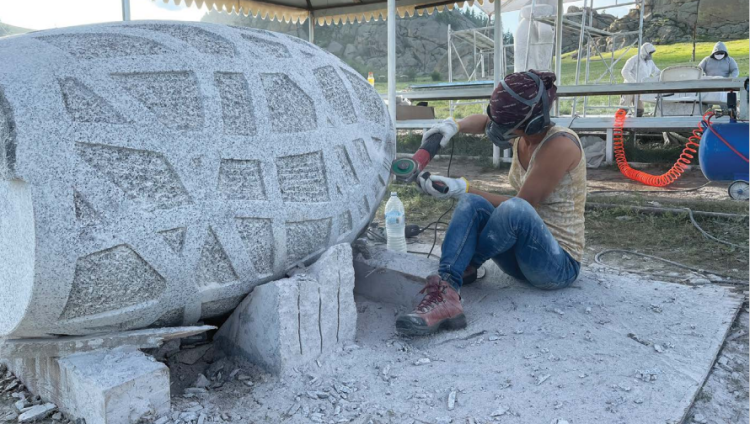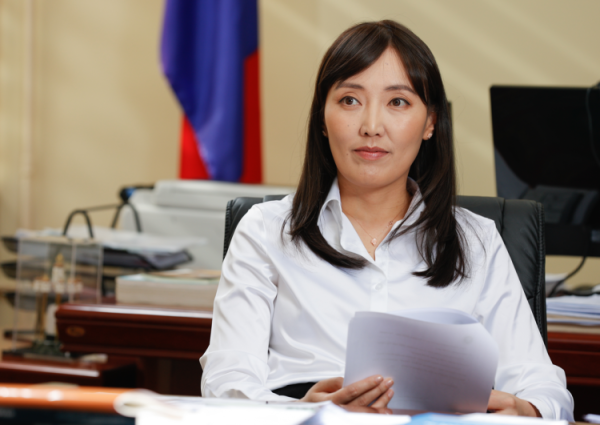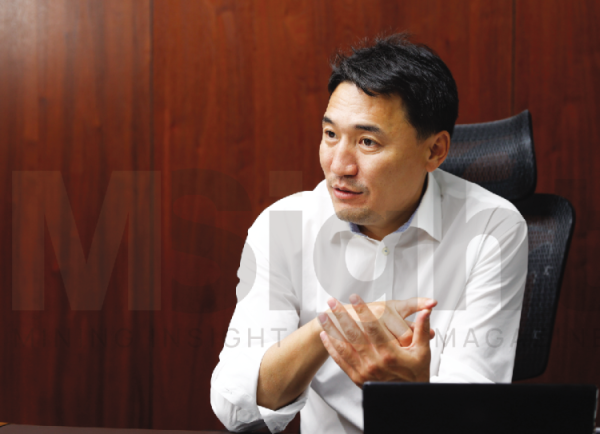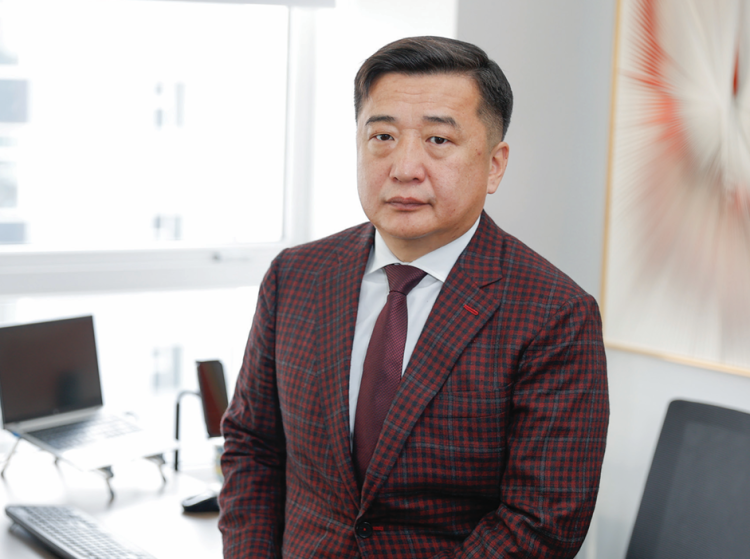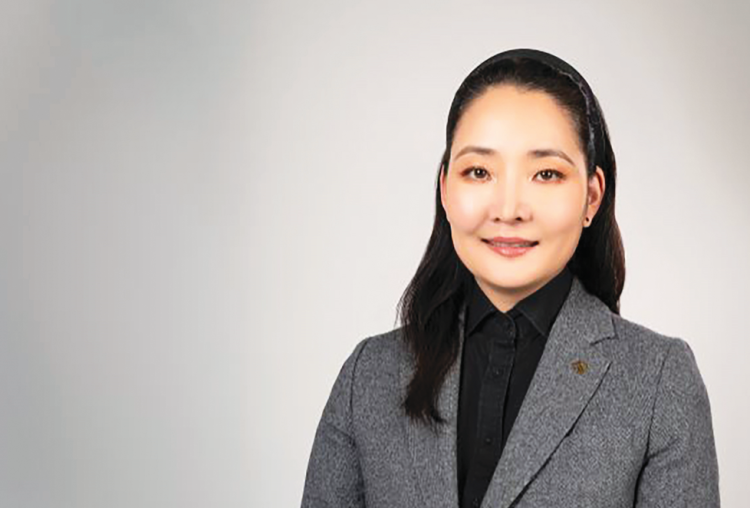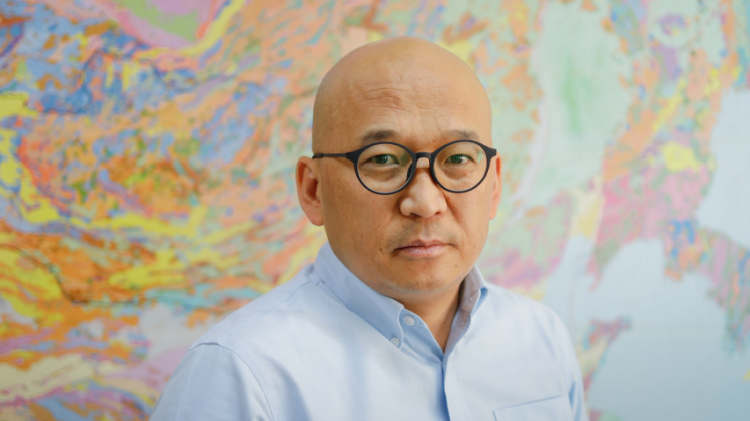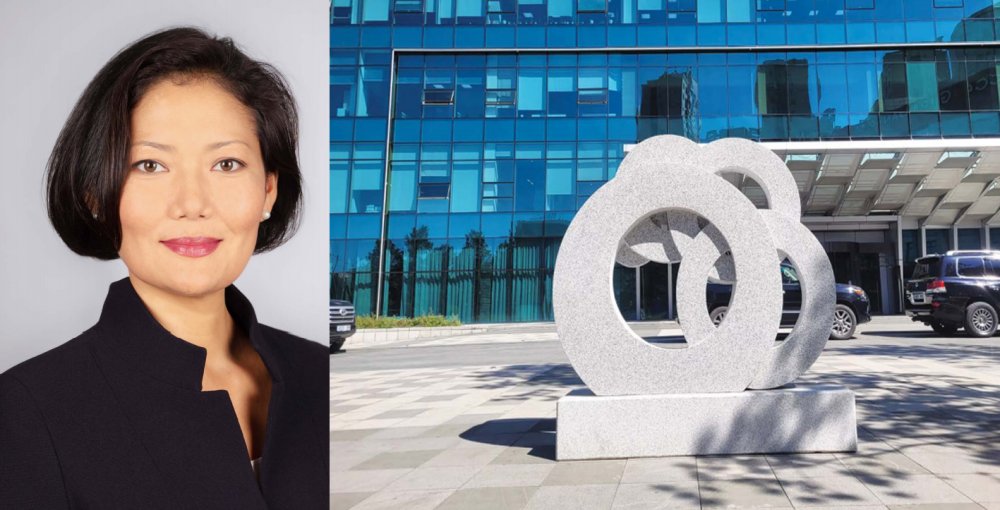 - Artists from various countries are expected to participate, and we aim to showcase the distinctive qualities of Mongolian stones –
- Artists from various countries are expected to participate, and we aim to showcase the distinctive qualities of Mongolian stones –The "MongolianArt" international sculpture symposium successfully occurred in Mongolia in August. Some of the artworks produced during the event will adorn the streets and squares of Ulaanbaatar, bringing joy and inspiration to its residents. These artworks have a unique quality: they were created by renowned international artists using natural stones, including Mongolian granite and marble, inspired by Mongolia's breathtaking natural landscapes. This symposium was organized by the Arts & Media Project Management 6 Consulting NGO in collaboration with the NordArtInternational Art Exhibition. Our correspondent, Batbold. O from Mining Insight had the opportunity to interview the Cultural Envoy of Mongolia, Oyuntuya Oyunjargal, who initiated the project and served as its curator.
As the project initiator, how do you assess the significance and efficacy of hosting the International Sculpture Symposium in Mongolia?
The inaugural "MongolianArt" international sculpture symposium took place from July 30 to August 21 at the Guru Eco Complex within the picturesque Gorkhi-Terelj Natural Park in Mongolia. Following its successful conclusion, the artworks created during the symposium were prominently displayed in the public space in front of the Khan Bank Tower, as well as the joint exhibition of NordArt international artists at the Khan Gallery until October 3rd. This event was orchestrated to commemorate two significant milestones: the upcoming 50th anniversary of diplomatic relations between Mongolia and Germany and the 10th anniversary of collaboration between NordArt and Mongolia, set to transpire next year. Additionally, to mark these momentous occasions, Mongolia's 5th independent pavilion will be showcased at "NordArt" from June 1 to October 6, 2024. "NordArt" stands as a globally acclaimed international contemporary art exhibition, and it holds the distinction of being Europe's largest annual exhibition, hosted in the northern region of Germany from June to October. It is ranked among the top 10 must-see contemporary exhibitions and is attended by renowned international artists and art enthusiasts. For the past nine years, NordArt and we have collaboratively curated more than 350 works from 120 Mongolian artists, which were subsequently showcased across Europe. This effort was initiated to highlight the depth of cooperation between the two entities in Mongolia. The symposium was conceptualized and organized as an integral component of the official collaboration with NordArt and was also proposed to the Ministry of Foreign Affairs and the Governor’s Office of the Capital City. It also involved extending an invitation to NordArt international artists to experience the natural beauty of Mongolia and create their artworks within this inspiring environment. The event was aptly named "MongolianArt" to signify the creation of a brand representative of Mongolia.
SYMPOSIUM PRODUCTION PROCESS
Bulgarin artist Liliya Pobornikova “Crossroads I” Mongolian granite
This project encompasses a multitude of aspects, including cultural tourism, cultural and creative industries, urban competitive identities, urban aesthetics, public aesthetics, and art education. While nations once competed with one another, contemporary competition often takes place within cities and states themselves. Urban planning has shifted towards creating pleasant living environments, considering the city's overall appearance, the environment it fosters, and its impact on public culture and education. The field of aesthetic education and mediation holds a significant role in nurturing and enhancing individuals. The implementation of this project in Mongolia aims to address these issues and further extend the established collaboration with "NordArt" to benefit Mongolia. Our partner NordArt is situated in a city with a population of 20,000 residents, yet it attracts a staggering 120,000 visitors within four months, six times the city's inhabitants. This phenomenon underscores the significant cultural tourism it embodies. Annually, an investment ranging from EUR 1.5 to 2 million is channeled into the curation and organization of exhibitions, while the local community reaps no less than EUR 60 million from cultural tourism. Moreover, its impact extends far beyond the economic realm, offering immeasurable social and developmental benefits. Hence, it raises the question of why a similar approach couldn't be directed towards Mongolia. Conversely, economically robust countries can readily invite artists and commission remarkable works. However, we encounter financial constraints when soliciting renowned artists to create their masterpieces. Over the past 25 years, "NordArt" has demonstrated that this challenge can be overcome through adept management and strategic approaches. This endeavor has resulted in the creation of a vast sculpture garden spanning 80,000 square meters at Ku, there will be artworks with an average value of MNT 4.8 billion, contributing significantly to the city's cultural landscape.
How harmonious and seamless was the process of artwork production using Mongolian natural stones? Are there any distinct characteristics that set these stones apart from the more commonly used materials in sculpture? Additionally, have any international artists had prior experience creating works with Mongolian natural stones?
Four of the artists channeled their creativity into artworks created from Mongolian granite, while the other two artists harnessed the power of black iron and stainless steel. They specifically worked with granite sourced from the Aduunchuluun quarry, owned by "TASO" LLC in the Tuv Province. The stainless-steel pipe materials were custom-ordered and transported from our southern neighbor. Upon their arrival, the visiting artists expressed their astonishment at Mongolia's abundant resources. They were particularly taken aback by the extensive use of rare green granite, a material not commonly found elsewhere in the world, in the construction of pedestrian walkways throughout the city. This realization was not unique to them; even the locals might not have fully appreciated the distinctive green granite paths, that grace locations like Sukhbaatar Square and Urt Tsagaan Street. For these accomplished artists, many of whom have created works in over 100 countries and cities around the globe, the opportunity to work with large stones in Mongolia was a rarity. This was especially significant as it marked the first occasion when numerous artists from diverse countries converged for this endeavor. Given their limited prior exposure to Mongolian stone, a sample of the stone was sent to them last year to introduce them to this unique material. While primarily focusing on Mongolian granite, new marble varieties were also introduced, with three artists choosing to work with marble. The ductility of these stones varied, contingent upon their color and metallurgical composition. Notably, the artists faced uncertainties about the inner structure of the stone, which sometimes evolved during their creative processes. Upon viewing our stones in video calls, it was noted that they bore a resemblance to those found in Spain. Spanish granite is renowned for its sturdiness, demanding considerable effort from artists.
Thomas Reifferscheid, Germany “Uprising Constellation” 2023, Mongolian granite
Crafting the desired shapes and textures can be quite challenging. Conversely, overly soft stones can pose problems, including a tendency to crumble. Mongolia's natural stones are truly valuable resources. Granite, in particular, is favored for its optimal balance, offering a medium level of hardness that proves conducive to sculpting. Our artists discovered that these stones lend themselves beautifully to the creation of diverse surface contrasts, allowing for intricate molding and finishing techniques. For instance, Spanish sculptor Nando Alvarez was particularly drawn to the allure of Avdrant's green granite, while artists like Liliya Pobornikova from Bulgaria initially planned to create one work but ended up producing two. For these artists, the emphasis often lies in uncovering the intrinsic essence of the stone and exploring its multifaceted color attributes, rather than merely shaping its form. Looking ahead, the potential exists to work with a wide array of stones, colors, and data in the coming year. Anticipating the arrival of artists from various countries, there is an opportunity to introduce the distinctive characteristics of Mongolian stones, thereby enhancing our understanding of our domestic resources. Working with a 5- to 10-ton stone poses challenges, notably in terms of cutting and extracting such a sizable stone from the quarry. Additionally, the presence of potential internal cracks necessitates a thorough examination of the stone selection process. Thus, ongoing efforts will involve conducting experiments to assess the availability of suitable stones in Mongolia, their workability for artistic creations, and the range of works that can be produced from these materials. Given that these works are exhibited in open environments, considerations for durability and longevity are of paramount importance. Moreover, there's an opportunity to link the symposium with "LandArt." Across various Arab countries, sculpture gardens are emerging in desert landscapes, demonstrating a harmonious fusion of art and nature. Beyond Ulaanbaatar, we can explore the creation of LandArt environments in the Gobi and Western provinces of Mongolia, employing works of art crafted directly within the landscape using natural materials. The sculptures produced in Mongolia often take on monumental, realistic, or historical themes. In contrast, the depictions of Mongolia by foreign artists tend to offer a fresh perspective, introducing a new narrative and artistic tone to the cultural landscape. Within the symposium's framework, Yongsun Jang from South Korea portrayed the image ofa gentle breeze meandering over the sunlit Gobi sands on a scorching day. Spain's Nando Alvarez, on the other hand, drew inspiration for his piece "Waterfall" from a serene stream flowing beneath the bridge leading to Ariyabal Monastery. Meanwhile, Thomas Reifferscheid envisioned Mongolia as a developing nation, as reflected in his work "Uprising Constellation." In contrast, Liliya Pobornikova created "Crossroads," exploring the concept that individuals encounter numerous paths, each requiring decisions that shape their lives. The symposium's roster of international artists extends to include Mongolian talents associated with NordArt. Notably, sculptor Gankhuyag Lkhamsuren, influenced by the historical events of 1937, expressed the idea that knowledge reigns supreme at all times through his work "Centaur". Ochirbold Ayurzana continued the thematic exploration with "Consciousness," culminating in the creation of "Mandala." Tuvshinjargal Jambal a stone sculptor who joined the Mongolian Pavilion at NordArt 2019, conceived the piece "Queen's Knot," symbolizing a woman's ability to unravel life's complexities through intellect and resourcefulness. This year's symposium produced a rich tapestry of diverse and intriguing sculptures. Notably, the symposium presents a unique opportunity for artists who meet the high criteria of "NordArt" to collaborate with emerging Mongolian artists. The skills and contributions of the eight young artists who served as assistants this year were highly valued. This symbiotic exchange serves as a vital platform for the sharing of expertise, experiences, and cultural influences between Mongolia's finest and international artists.
Could you please provide an overview of the scope and distinguishing features of the upcoming symposium for next year?
The "MongoliaArt" symposium is set to expand significantly in 2024, marking the beginning of a triennial schedule in Mongolia. Scheduled for August through October of the upcoming year, the event will extend invitations to around 20 international artists, with the selection process commencing this November. The selection is a global affair, overseen by an international panel of judges. In addition to sculpture, the symposium is open to embracing various art forms, including installation art. This year's visiting artists gained insights into Mongolia's array of natural resources and materials, inspiring them to think on a grander scale and create larger works, experimenting with diverse combinations. Moreover, artists will enjoy the flexibility to choose materials, considering the quality of metals to determine whether the final piece will be suited for indoor or outdoor display. With abundant copper mines at our disposal, copper can be explored as an indoor sculpture installation material. Beyond stones, the exploration extends to metals, precious and semi-precious stones, and even the potential of incorporating industrial waste. To artists, waste is a wellspring of creative potential.
Certainly, organizing an international symposium in Mongolia involves significant costs. How were these financial challenges addressed and resolved?
"NordArt" encompasses numerous facets that extend beyond the realms of art and creativity. It is executed through a Public-Private-Partnership (PPP) model, addressing various critical matters such as urban design, city culture, the creation of a unique urban environment, cultural and art education for the city's residents, the promotion of cultural tourism, fostering the creative production of culture, facilitating cultural exchanges between nations, and, reciprocally, promoting the country's image internationally through works of art. PPP is instrumental not only as a cultural endeavor but also as an economic project. The symposium's economic foundation lies in offering international artists the opportunity to present their artworks at production costs. "MongolianArt" is a substantial MNT 1 billion project. We are crafting artworks valued at MNT 250–500 million at cost price. The inaugural Mongolian pavilion at NordArt had a budget of MNT 1 billion, while subsequent independent pavilions were erected for MNT 500 million. Realizing such endeavors without state funding is undeniably challenging, but these works hold immense significance as they circulate within the economy and contribute to the creative industries. Both "NordArt" and the German Embassy, alongside the Office of the Capital Governor, actively participated as official partners in the "MongolianArt" symposium. Their roles extended to supporting the cultural education of citizens, enhancing the city's aesthetics, and enriching the city's cultural landscape. Furthermore, 12 companies provided invaluable support and collaboration, offering their products and services. TASO LLC contributed its granite, while Juulchin World Tours LLC sponsored the accommodation and travel expenses of the artists and curator team in Mongolia, as well as the symposium's infrastructure. Khan Gallery and Khan Bank generously provided exhibition spaces, both indoors and outdoors. The symposium demonstrated the potential of creating a distinctive brand and fostering its growth, eventually leading to economic opportunities in the realm of cultural tourism. Given the pivotal role of influential companies in our nation's economy, I hope to see them invest in areas that benefit society, such as education, culture, and the development of children and youth. Collaboration and support for next year's event would be highly appreciated.
Could you elucidate the benefits and prospects that emerge from Mongolian artists' participation in the "NordArt" exhibition? Although many Mongolians are familiar with Ochirbold's work, "Consciousness," displayed in the garden of the UN Headquarters, it's not widely known that you've integrated Mongolian artists into "NordArt." Could you elaborate on this engagement and its impact?
Our organization, "Arts & Media Project Management & Consulting NGO," operates as a communityserving non-governmental organization, fostering cross-sector and cross-organizational collaboration between Europe and Mongolia in fields encompassing art, culture, creative industries, education, science, and society. The majority of our projects are oriented towards international initiatives and aspire to represent Mongolia at a professional level. To date, we have successfully executed over 60 projects, with "NordArt" constituting just one of our endeavors within the realm of visual arts. In 2012, upon my arrival in Mongolia, and after a comprehensive exploration of the potential for international projects in the domain of art and culture, it was determined that the visual arts held the greatest promise. Subsequently, preparations were undertaken for Mongolia's first participation in the Venice Biennale. A pivotal moment occurred during my visit as a commissioner to an artist's workshop, where I had the privilege of acquainting myself with the art works. In 2013, after witnessing the initial artistic concept of Ochirbold Ayurzana's "Consciousness," a collaborative journey commenced. This was driven by our belief in the artist's unbridled desire, remarkable skill set, and latent talent ready to be showcased on the global stage. In 2015, we presented 120 works by 34 Mongolian artists in a sprawling 3,000 m² exhibition space as a "Focus Country" at the NordArt. As part of the NordArt symposium production, Ochirbold Ayurzana has presented his on-site-created sculpture, "Man is not an abundance on the earth," securing the admiration of the public and the public award. The inaugural iteration of "Consciousness" was unveiled at "NordArt" in 2015, featuring dimensions of 1.80 meters and cast in bronze, which captivated the European audience's attention. In 2017, due to its resonance, the President of Mongolia extended an offer to display it at the United Nations. Consequently, the artwork, in a recycled form and constructed from stainless steel, was positioned in the United Nations Park atop a 10-meter-long mirrored base, soaring to a height of 3.20 meters. Building upon the concept of "Consciousness," his sculpture installation "Degere" was presented in the IV Mongolian pavilion at NordArt 2019, earning the prestigious NordArt Prize 2019. This sculpture installation, spanning 21 meters in length and 17 meters in width, was made from black iron and installed at the heart of the park, eliciting awe and delight from the public. This process holds immense significance, extending beyond the promotion of Mongolia, as it contributes to establishing a distinctive position and garnering international recognition for Mongolian artists within the global art market. Our primary objective is to guide Mongolian artists toward the realm of the art economy, with the dual aim of propelling at least one artist to international acclaim and fostering their financial growth.
What will be the number of participating Mongolian artists in the fifth Mongolian pavilion at "NordArt"?
We plan to introduce approximately 20 artists. The selection process was initiated at the end of October. Following the preparation of their materials, NordArt's international jury team will evaluate and select art works.
Thank you for the interview.
We wish to extend our sincere appreciation to you and your magazine's dedicated team for consistently sharing information about our initiatives with your esteemed readers. Thank you.
Mining Insight Magazine,№10 (023)



